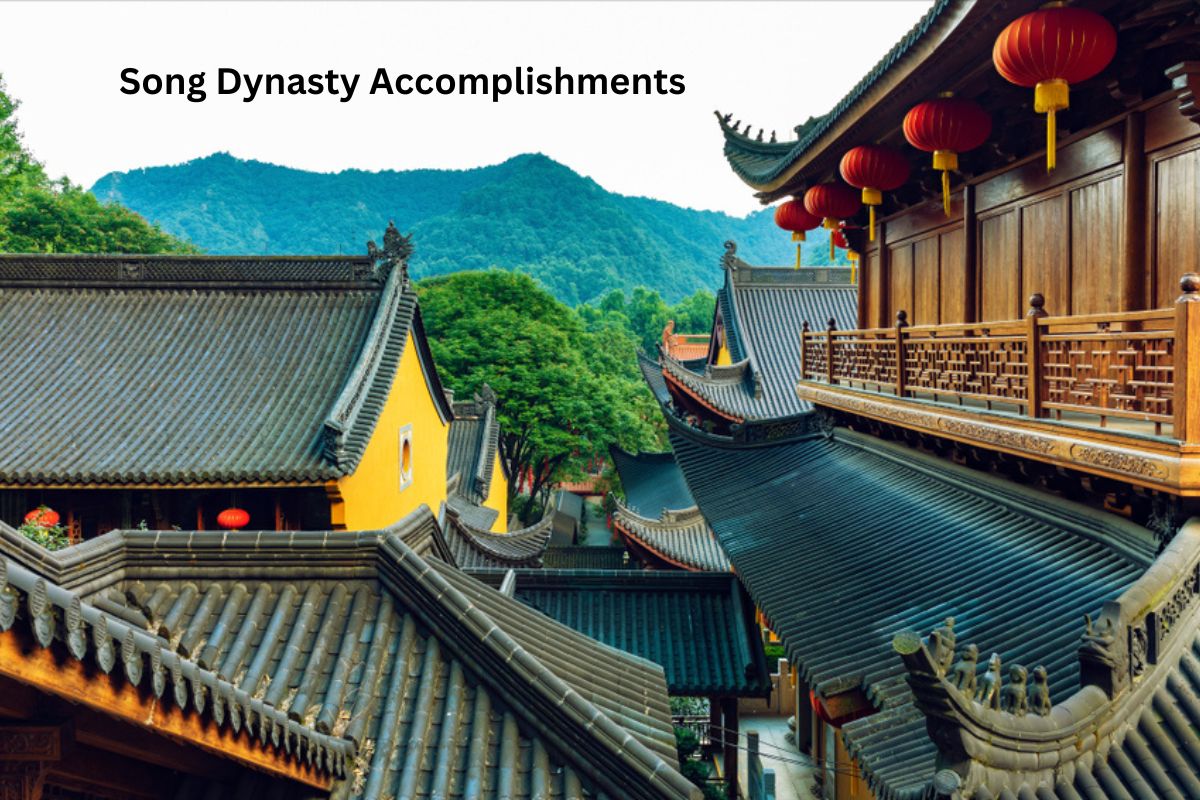The Song Dynasty, spanning from 960 to 1279, was a remarkable era in Chinese history characterized by a wide array of accomplishments across various domains.
From cultural and artistic innovations to technological breakthroughs and maritime exploration, the Song Dynasty left an enduring legacy that continues to influence contemporary understanding and appreciation of Chinese culture and advancement.
This period witnessed the rise of Neo-Confucianism, significant agricultural improvements, pioneering printing techniques, the discovery of gunpowder, the development of mechanical clocks, vibrant trade networks, artistic achievements, renowned ceramics, prolific literature, and ambitious maritime expeditions.
Each of these accomplishments played a role in shaping not only the dynasty itself but also the course of human progress on a broader scale.
Accomplishments of the Song Dynasty
1. Neo-Confucianism
Neo-Confucianism emerged as a dominant philosophical and ethical system during the Song Dynasty. It was a fusion of Confucian principles with elements of Buddhist and Daoist thought. Scholars like Zhu Xi played a key role in shaping this ideology.
Also Read: Facts About the Song Dynasty
Neo-Confucianism emphasized self-cultivation, moral integrity, and the importance of a harmonious relationship between humans and the natural world.
It had a profound influence on education, governance, and social values, shaping the intellectual landscape of China for centuries to come.
2. Innovations in agriculture
The Song Dynasty saw significant advancements in agricultural practices. The adoption of Champa rice, a high-yield variety from Southeast Asia, led to increased food production and helped support a growing population.
Also Read: Timeline of the Song Dynasty
Alongside this, techniques like terrace farming, improved irrigation systems, and crop rotation were implemented to maximize yields. These innovations contributed to the stability of the empire and its ability to sustain its population.
3. Printing technology
The Song Dynasty made pioneering strides in printing technology. Bi Sheng is often credited with inventing movable clay type, which laid the foundation for later developments in printing. Wooden movable type was also used for publishing books and documents, allowing for the reproduction of texts on a larger scale.
This advancement significantly increased the availability of written materials, promoting education and knowledge dissemination. Printing played a crucial role in preserving and spreading cultural and intellectual heritage.
4. Gunpowder discovery
Gunpowder was discovered and utilized during the Song Dynasty. Initially invented for medicinal and pyrotechnic purposes, its potential for military applications was recognized.
By mixing saltpeter, charcoal, and sulfur, the Chinese created explosive compounds that later led to the development of early firearms, such as fire lances and proto-cannons.
This discovery would eventually revolutionize warfare and have profound implications for military technology worldwide.
5. Mechanical clocks
The Song Dynasty is renowned for its advancements in mechanical clock technology. The most notable invention was the water-driven escapement clock, attributed to Su Song.
These clocks used a series of gears and water-driven mechanisms to keep time accurately, often striking bells to announce the hours. These clocks served not only as timekeeping devices but also as impressive feats of engineering that showcased the dynasty’s technical prowess.
6. Trade and commerce growth
The Song Dynasty witnessed substantial growth in trade and commerce. The construction of the Grand Canal and other waterways facilitated the movement of goods between regions.
Additionally, improvements in maritime technology, such as compasses and stern-mounted rudders, allowed for safer and more efficient sea travel.
These developments led to the establishment of bustling urban centers and a flourishing merchant class, contributing to economic prosperity and cultural exchange.
7. Advancements in painting and art
The Song Dynasty was a golden age for Chinese art, particularly in the realm of painting. Landscape painting underwent a significant transformation during this period.
Artists like Fan Kuan and Li Cheng pioneered the “Northern Song” landscape style, emphasizing majestic and awe-inspiring natural scenes.
Meanwhile, the “Southern Song” style, represented by artists like Ma Yuan and Xia Gui, focused on more intimate and lyrical landscapes. These artistic developments laid the foundation for later Chinese painting traditions.
8. Renowned ceramics production
The Song Dynasty produced some of the most exquisite ceramics in Chinese history. Celadon ware, such as the “Ding” and “Ru” kilns, was highly esteemed for its delicate colors and crackled glaze.
“Jun” ware showcased vibrant monochromatic glazes, while “Cizhou” ware featured decorative techniques like sgraffito. These ceramics were not only functional but also celebrated as works of art, reflecting the Song Dynasty’s dedication to craftsmanship and aesthetics.
9. Prolific literature
The Song Dynasty was a prolific period for literature, encompassing various genres including poetry, prose, essays, and historical records. Su Shi (Su Dongpo) and Huang Tingjian were two prominent poets who contributed to the era’s literary excellence.
Su Shi’s poems expressed personal emotions and societal observations, while Huang Tingjian’s works were marked by their emotional depth and introspection. The Song Dynasty’s literature captured the complexities of human experiences and societal changes.
10. Maritime exploration
During the Southern Song Dynasty, maritime exploration and trade flourished under the leadership of Admiral Zheng He.
Zheng He’s expeditions extended China’s influence to regions as distant as Southeast Asia, India, the Arabian Peninsula, and East Africa. These explorations showcased China’s naval prowess and diplomatic reach, fostering cultural exchanges and trade networks along the maritime Silk Road.
